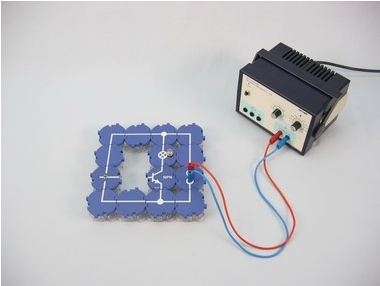Principle
This experiment should impart the knowledge, that a collector current only flows through a transistor when the correct polarity of the collector voltage is chosen and a base voltage of correct polarity is applied. For an npn transistor, both the collector and base must be connected to the positive pole. The emitter is here in each case the reference electrode.
Prior to carrying out the experiment, the students should be familiarised with the designations of transistor electrodes, as well as the meaning of the term npn transistor. The comparison of the base current, which can be estimated from the size of the base resistance and the applied voltage, with the collector current, which causes the lamp to light up, also leads to the conclusion that a minimal base current is sufficient to make the transistor conductive.
Benefits
- No additional cable connections between the building blocks needed - clear arragned and quick setup
- Contact saftey due to puzzle blocks system
- Corrosion-free gold plated contacts
- Doubled earning sucess: Electric circuit diagram on top, real components can be seen unterside
Tasks
With which voltage is an npn transistor to be operated?
Examine which polarity the collector voltage and the base voltage of an npn transistor must have for a collector current to flow.

